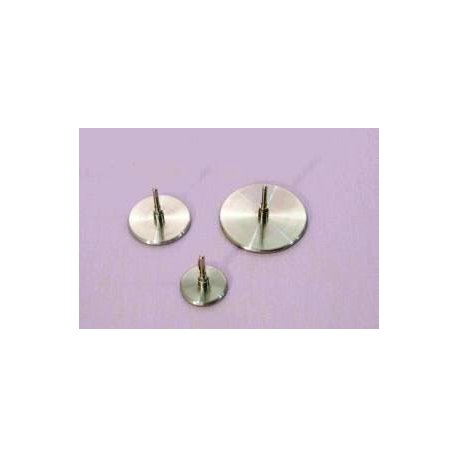According to studies, diathermy solves the biological damage of forms of chronic disease characterized by degeneration and fibrosis. The fibrous scar tissue resulting from the biological damage is revascularized through the increase of the internal temperature up to 41 ° C, with the restoration of proper metabolism via displacement currents that produce three types of effects: Biochemical: balances the disorder of the enzyme and accelerates cell drawing oxygen-rich blood, speeding up and facilitating the flow from the peripheral areas not affected by cellulite. heat: joule effect produced by the displacement currents, it induces an endotherm deep and homogeneously diffused by heating in a uniform manner and targeted the affected area without overheating the outer part; Mechanical: increasing the speed of fluid flow, stasis emolinfatica drains and tones the vascular walls.
Probe-resistive small
ET01209S
3 days available
€35.20
Tax excluded
circular resistive electrode is not insulated with 4 mm plug
resistive electrode characteristics
The resistive electrode is a metal electrode (not isolated) which allows to concentrate the action of the current on the fabrics that offer greater resistance to the passage of electric charges as ligaments, tendons, skin, fat and bone tissue. This produces an increase in temperature due to the Joule effect specifically in the area between the two metal electrodes, the resistive (active) and passive (plaque), or where it develops the current flow which generates the heat.
Size: Small
diam. 35 mm
Qt / pack: 1 pc



Grade Comments (0)